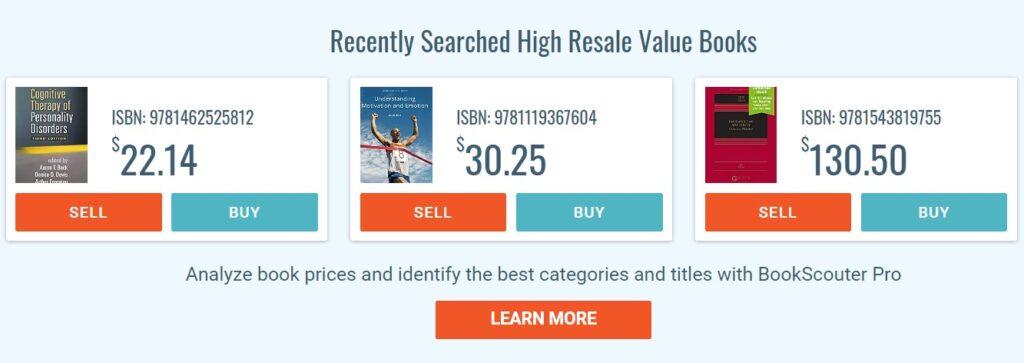
Are you one of those people who like examining staff and looking for something special to buy for yourself or someone else? You enjoy spending time at antique shops, and you were always inspired by the idea of making money reselling goods?
Selling books can be a great way to turn your passion into a profit. In this blog, we’ll explore the different ways you can make money selling books, from leveraging online marketplaces to setting up your brick-and-mortar store. Whether you’re a retail arbitrage enthusiastic starter or a professional bookseller, you’ll learn how to make money on book arbitrage. So let’s get started!
Let’s discuss some key points of selling books. Below you’ll find a step-by-step guide on how to make money selling books confidently and profitably.
1. Research the Market
Researching the market can help you identify the most lucrative category and the best pricing for those books. Try to analyze the demand for different book categories. You’ll want to identify what categories are popular and what categories are not. This will help you determine which categories are the most profitable to focus on.
Generally, you can pay attention to those niches that are always selling well; they are:
- Textbooks
- Non-fiction books
- Children’s books
- Religion and self-help books
- Modern first-edition books
- Craft books
- Sheet music
- Collectibles and antique books
Regarding which books are best to sell, it can also depend on what kind of books you’re personally interested in. For example, if you’re a fan of science fiction, fantasy books, or classic literature, you’ll want to focus on selling books in those categories.
 Advice
Advice
Start small. If you’re just getting started in the bookselling business and afraid of a plausible failure, it’s best to start with one category just to test the ground. It’ll be a simple step to undertake without taking risks and investing in a lot of overhead.
Let the BookScouter Pro tools help you make money selling books. Use high resale value books to develop the best bookselling strategy based on real data. You can track popular ISBNs with the high resale value, analyze book prices, and identify the best categories and titles by accessing BookScouter users’ search history. The tool shows the books above a certain buyback value searched within the last 14 days by BookScouter users. You can enter the minimum and maximum price and the number of days to search through. It is the best assistant for those who make money on book arbitrage.
2. Find Sources for Books

One of the best things about selling books for profit is that you can find cheap books that you can resell for a higher price. You can find these books anywhere, from secondhand bookstores to online marketplaces. Here are some of the best places to search for cheap books that you can sell for a profit:
- Thrift stores and local used bookstores (like Goodwill)
- Garage sales
- Online marketplaces (such as eBay or Amazon)
- Library sales
- Book fairs
- Yard sales
- Flea markets
- Craigslist (for cheap textbooks)
- Family and friends
By searching for cheap books, you can make some extra money by reselling books for a profit. Just be sure to determine a book’s condition before reselling it and look for books that can be resold for a higher price.
3. Setting Up Your Business
The next step to setting up a business to sell books for profit is choosing the right platform. Many options are available, e.g., through online bookstores, book fairs, flea markets, and even your website. Each has advantages and disadvantages, so you should research the different websites to sell your books and determine which is best for your business.
Amazon and eBay are great starting points, booksellers actively use them to make money selling books, and these popular platforms also provide helpful tools and services to help you list and manage your inventory.
If you don’t have time to list your books on these websites and wait too long for buyers, you can sell your books to buyback vendors through BookScouter, especially if you’re mainly involved in selling textbooks for profit.
If you want to build your own website, you should look into using a platform like Shopify with all the tools you need to get your store up and running.
Once you have chosen your platform, the next step is to create a plan for organizing your books. If you have your own website for selling books, you will need to decide how you want to categorize your books, as well as how you want to list and price them. Additionally, you should map out a plan for handling inventory, packaging, shipping, receiving funds, and customer service.
Working with Amazon requires thoroughly studying shipping, customer fulfillment methods (FBM or FBA), and different seller plans to choose the most suitable and profitable business model. If you are new to selling books on Amazon, check out a step-by-step guide on how to sell textbooks on Amazon to help you sort things out.
As you can see, setting up your business takes some work to get off the ground, but with the right plan, you will successfully pass this stage and start making money.

 Advice (for those who sell books on Amazon)
Advice (for those who sell books on Amazon)
Taking quality photographs of your books is essential for your book-selling business. Customers want to be able to see what they are buying, so you should make sure to take clear, high-quality photos of each book you are selling.
You will also need to write informative book descriptions. This is your chance to tell potential buyers that they are buying exactly the book they were looking for, so make sure to include all of the details about the book.
An equally important detail is indicating the right book condition. It’ll be of no good to lie about the condition saying that it’s ‘Like New’ when it’s basically ‘Used’.
It is crucial to keep your customers satisfied, i.e., you need to organize high-quality customer service, communicate with your customers, promptly answer their questions, and effectively solve any problems to ensure your store’s rating is constantly high.
4. Market Your Book-Selling Business (for those who sell books on their own website)
There are numerous ways to reach potential customers and get your bookstore noticed. First of all, you can take advantage of social media, which is an invaluable tool for marketing your brand. You can reach the masses quickly with a few clicks of a button and some marketing budget. Create a Facebook page and post regular updates regarding your bookselling business. You can also hire an SMM specialist who will grow your brand on social media by publishing images and videos, posting reviews of books, or even hosting contests and giveaways to draw in more followers.
Online advertising networks are a great option if you’re looking for more targeted marketing. With these networks, you can create ads tailored to a specific audience. For example, you may target people fond of rare and antique books you sell in your boutique. If you have a brick-and-mortar business, you can also target ads to people by location to get more local customers.
Following these tips can effectively market your bookselling business and attract more customers.

 Advice
Advice
Be patient, and don’t expect to make much money immediately. Building a successful bookselling business takes time and dedication, so don’t get discouraged if you don’t make a lot of money right away. Finally, be flexible and open to trying new things. There are many ways to sell books for profit, so don’t get stuck in the same old routine.
Bottom Line
Making money selling books can be a great way to make some extra cash, especially when you’re a student looking for a side hustle (feel free to read about more alternatives for side hustles for college students). With the right resources, research, and year-by-year experience, you can succeed with this and try scaling your processes and building a bookselling business. With the proper knowledge and understanding of the market, you can become a successful bookseller and make a living from it.
Good luck, and happy selling!





